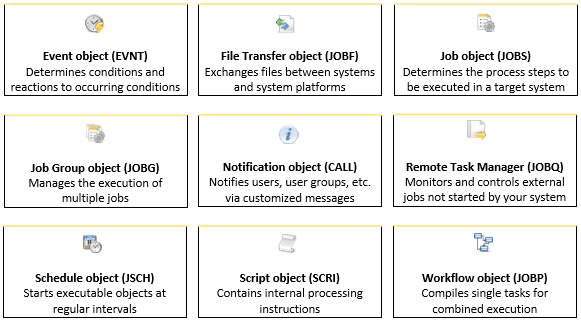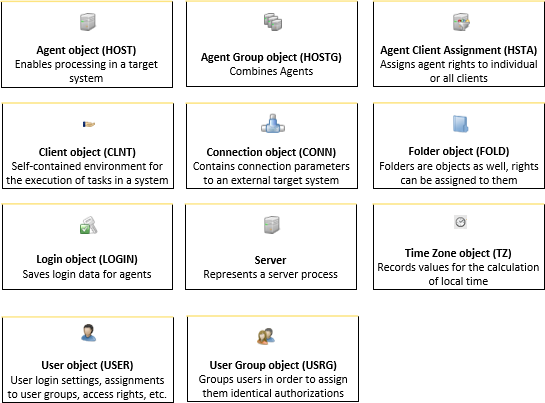Objects
Processes in Automic Workload Automation are combinations of individual steps that are linked to each other. An object represents one of these steps. Objects are entities that work together to form coherent automated sequences. As a developer and object designer, you create, edit and work with them in the Process Assembly perspective. Objects that are executing or have been executed are called tasks and they are visible in the Process Monitoring perspective, where you can access their history and monitors. This topic describes the classes and types of objects and provides links to their descriptions.
This page includes the following:
Click on the boxes to open the object description.
Executable Objects
These are objects that you can process manually or that are processed through control mechanisms of parent objects. When executed they go through various stages, namely activation, start and execution.

Note: The VARA to Grid Widget replaces the deprecated Cockpit object.
Active Objects
You can modify the contents of active objects manually. They can also be modified automatically when they are being processed by an executable object. Unlike executable objects, they do not go through different stages.

Passive Objects
Passive objects are static. Their content is defined by users and cannot be cannot be modified by executable objects.

System Objects
System objects serve to administrate your system.

Other Object Types
The following extra objects are available for the following object types:
- Call API (API)
- Container for an Agent Group (C_HOSTG)
- Child task of SAP, PeopleSoft or RemoteTaskManager (JOBD)
- Report (REPORT)
- Access to external reports (EXTREPORT)
See also: